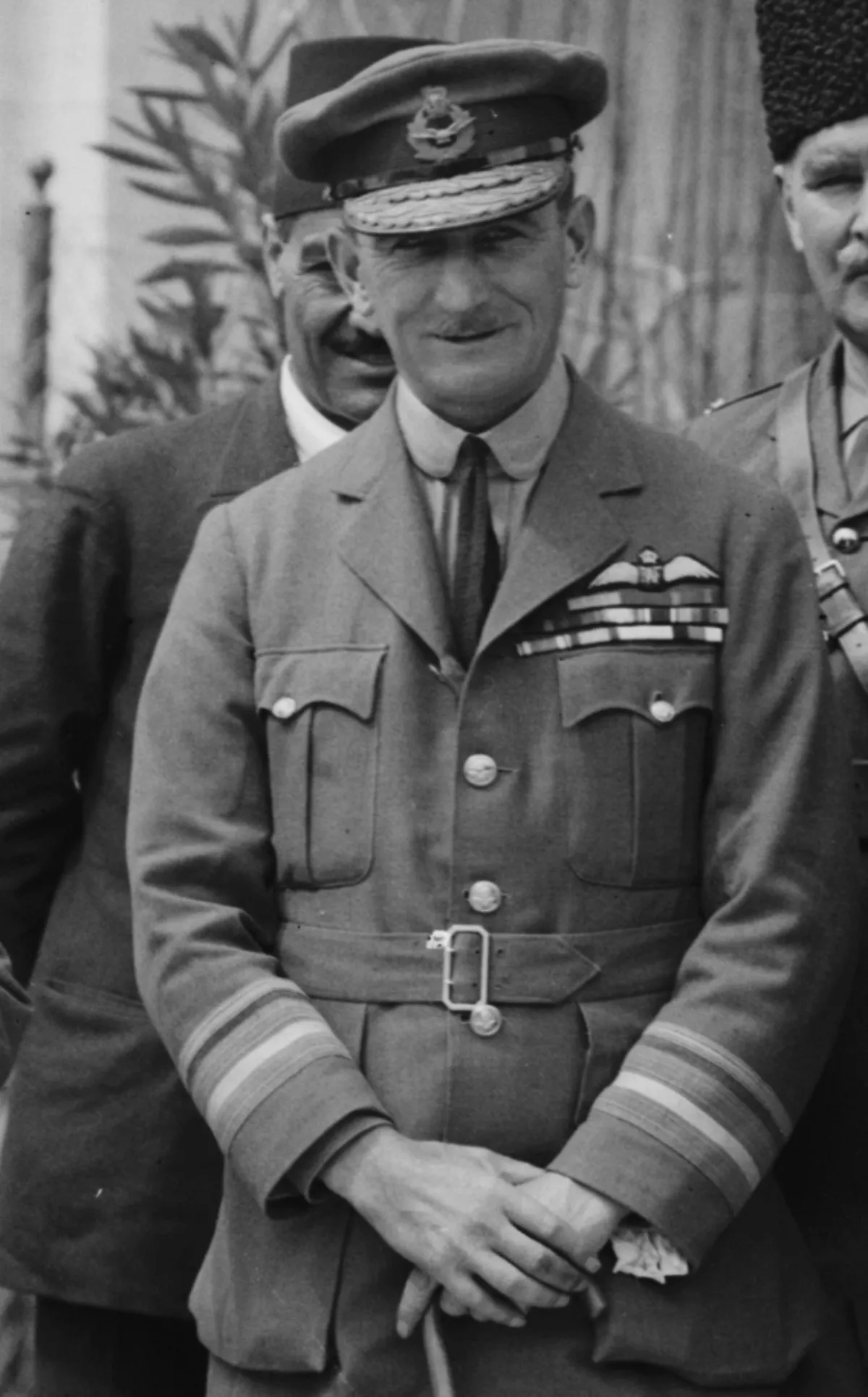 1.
1. In 1933, Salmond served as Chief of the Air Staff for only a matter of days before being taken ill and subsequently dying from cancer.

 1.
1. In 1933, Salmond served as Chief of the Air Staff for only a matter of days before being taken ill and subsequently dying from cancer.
Geoffrey Salmond was born on 19 August 1878 to Major General Sir William Salmond and Emma Mary Salmond.
Geoffrey Salmond's siblings included a brother, John, and a sister Gwen.
Geoffrey Salmond was educated at Aysgarth School followed by Wellington College in Berkshire before joining the Army.
Geoffrey Salmond joined the British Army, undertaking his officer training at Royal Military Academy Woolwich around 1897.
Geoffrey Salmond was commissioned into the Royal Artillery on 23 June 1898 and saw active service during the Second Boer War.
Geoffrey Salmond took part in the relief of Ladysmith and the operations on the Tugela Heights.
Geoffrey Salmond received the Queen's Medal and seven clasps, then on 10 November 1900 he was sent to China and gained a medal for the operations during the Boxer Rebellion there.
Geoffrey Salmond was seconded to study Japanese on 2 May 1905 and promoted to captain on 2 December 1905.
Geoffrey Salmond was then appointed Adjutant with the Royal Field Artillery on 4 February 1908.
Geoffrey Salmond became a staff office at the War Office on 31 July 1913, a staff officer in the Directorate of Military Aeronautics on 31 August 1913 and then a staff officer at Headquarters Royal Flying Corps in France on 4 August 1914.
Geoffrey Salmond went on to take up the post of Officer Commanding No 1 Squadron RFC on 26 January 1915.
Geoffrey Salmond was appointed a wing commander on 18 August 1915 and sent to command the Fifth Wing in Egypt in November 1916.
Geoffrey Salmond was promoted to brevet lieutenant colonel on 3 June 1916.
In July 1916, Geoffrey Salmond was promoted to temporary brigadier general and given command of the RFC in the Middle East.
Geoffrey Salmond was promoted to the substantive rank of lieutenant colonel on 3 September 1918.
Geoffrey Salmond's idea was to send a demonstration flight or flights of RAF aircraft across Africa, thus providing the link of which Cecil Rhodes had dreamed in a Cape-to-Cairo railway.
Geoffrey Salmond was not destined to put his idea into execution, though his airway was used by Sir Pierre van Ryneveld and Sir Christopher Brand on their first flight to South Africa.
Geoffrey Salmond was appointed a Grand Officer of the Egyptian Order of the Nile on 9 November 1918, a Companion of the Order of the Bath in the 1919 New Year Honours, and a Grand Commander of the Greek Order of the Redeemer on 5 April 1919.
Geoffrey Salmond was appointed a Knight Commander of the Order of St Michael and St George on 3 June 1919 and mentioned in despatches on account of his services in the Middle East on 28 June 1919.
Geoffrey Salmond was awarded a permanent commission in the Royal Air Force as a major general in August 1919.
On 23 February 1922 Geoffrey Salmond returned to Great Britain to take up the post of Director-General of Supply and Research at the Air Ministry.
Geoffrey Salmond was advanced to Knight Commander of the Order of the Bath in the 1926 Birthday Honours.
Geoffrey Salmond was promoted to air marshal on 1 July 1929.
In September 1931, Geoffrey Salmond returned from India to take up command of the Air Defence of Great Britain organization which was responsible for British air defences, including both fighters and bombers.
Geoffrey Salmond was promoted to air chief marshal several months later on 1 January 1933.
On 1 April 1933, Air Chief Marshal Geoffrey Salmond took over from his brother John as Chief of the Air Staff.
Geoffrey Salmond had become severely unwell and days later arrangements were announced for Sir John Geoffrey Salmond to resume the RAF's senior post temporarily.
Geoffrey Salmond died on 27 April 1933 and Sir John carried on his duties as Chief of the Air Staff for several more weeks afterwards.
Geoffrey Salmond had a large funeral procession with Trenchard as one of the pallbearers.